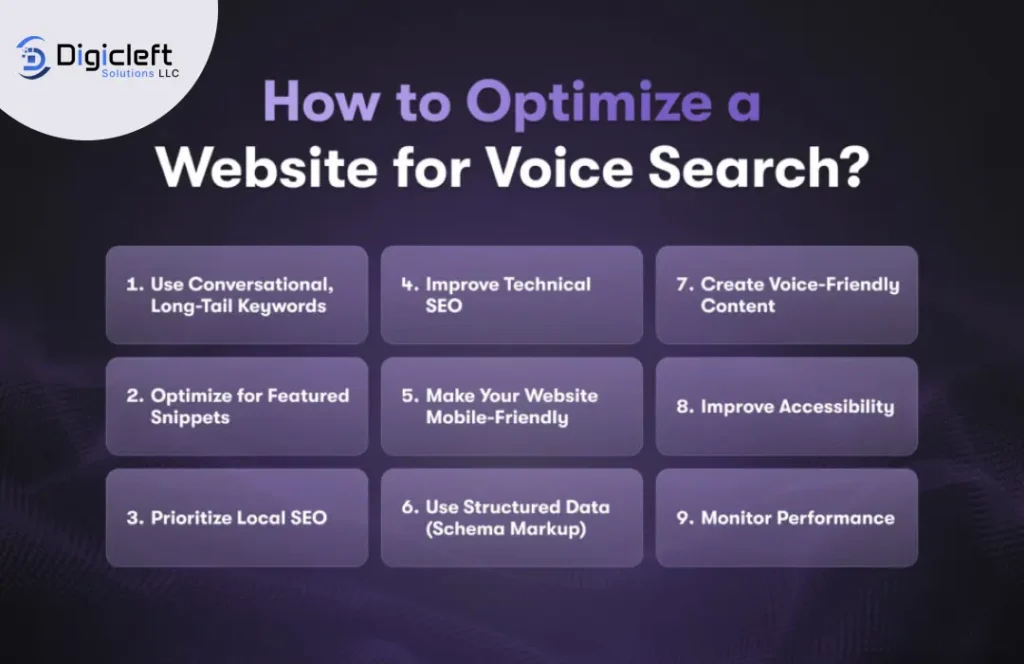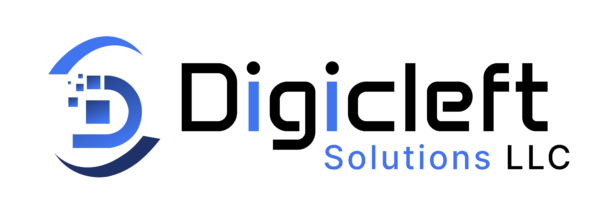
Discover how Digicleft solution helps you future-proof your website for voice-driven interactions while boosting SEO performance.
Understanding Voice Search
What’s Voice Search?
it’s allows users to speak into a device and receive results without typing. Think Siri, Alexa, or Google Assistant powered by natural language processing.
Voice Search vs. Traditional Search
Unlike traditional typed queries, voice searches are longer and conversational. Example:
- Typed: “best Italian restaurant NYC”
- Spoken: “Hey Siri, what’s the best Italian restaurant near me?”
The Rise of Smart Assistants
Smart devices go beyond phones smart speakers, TVs, and even cars are voice-enabled, making optimization essential.
Why Voice Search Matters
Voice search is hands-free, instant, and often mobile-based. If your site isn’t ready, you risk missing local and conversational traffic.

Tips for Optimizing Your Website
Tip 1: Optimize for Conversational Keywords
Use natural, question-based phrases. Focus on long-tail queries like “What’s the best SEO tool for small businesses?”
Tip 2: Focus on Featured Snippets
Voice assistants often read these aloud. Structure answers in short paragraphs, bullet points, or tables.
Tip 3: Improve Site Speed & Mobile Experience
- Use responsive design
- Compress images
- Reduce unnecessary scripts
Tip 4: Apply Structured Data (Schema)
Use FAQ, Local Business, and Product schema to improve chances of being read aloud in results.
Tip 5: Optimize for Local Search
70% of voice queries are local. Keep your Google My Business updated and encourage positive reviews.
Pro Tip: Use AI-Powered Solutions
Digicleft solution helps analyze voice search trends, predict user queries, and adapt your content strategy in real time.
Common Mistakes to Avoid
- Keyword stuffing
- Ignoring mobile users
- Focusing only on traditional SEO
Measuring Success
Track metrics like:
- Voice search impressions
- Click-through rates
- Engagement and bounce rates
Use Google Analytics and Search Console for insights.
Case Studies
Small Business: Local restaurants optimized for “near me” queries and saw a 30% boost in foot traffic.
Large Brands: Retailers used schema markup and AI tools to rank higher in assistant recommendations.
Conclusion
Voice search is here to stay. By optimizing with conversational keywords, snippets, structured data, local SEO, and Digicleft’s AI-powered tools, your site can stay ahead of the curve.
FAQs
1. What’s voice search optimization?
It’s the process of making your website voice-query friendly using natural language and conversational keywords.
2. How do I find conversational keywords?
Use tools like AnswerThePublic or SEMRush to discover questions your audience asks.
3. Can small businesses benefit?
Yes! Local voice searches help drive foot traffic and improve visibility.
4. How long until results show?
Typically within 3–6 months of consistent optimization efforts.
5. Is Digicleft solution suitable for all websites?
Yes, it adapts to local businesses, e-commerce, and content-heavy sites.

